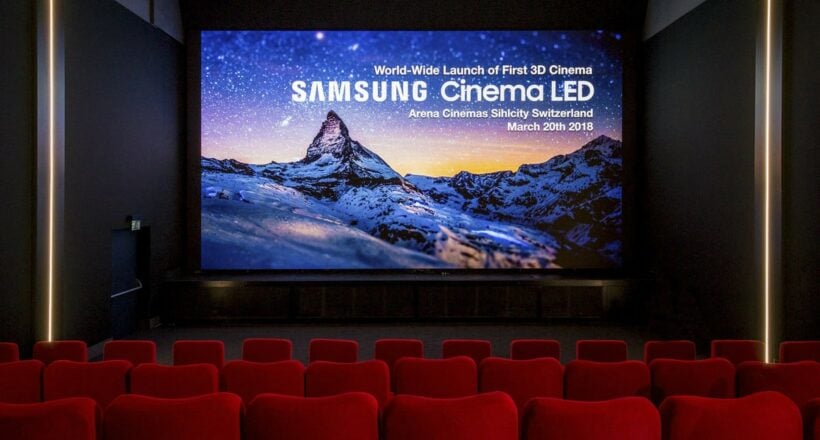Are huge LED screens coming to your cinemas?

First there was celluloid film, then digital projection. Now cinemas are toying with using giant LED screen technology. Ben Hobbs from H3-digital.com reports on the emerging cinema technology…
If you go to the cinema, today, anywhere in the world to watch a movie – you will be watching a projected image, shone onto a white (or grey) screen. It’s been that way since 1895 when the first publicly screened movie was shown in Paris, in December. Cinema’s equal projectors, yes nowadays most of those projectors are digital,digital projectors were launched in 1999 to replace film, after all film is hard to move around, load, transport whilst data is not.
That’s the Status Quo, except the large Korean electronics manufacturers aren’t particularly well known for their projector technology, Samsung and LG are very famous for their LCD technologies (LED, OLED, QLD, ULED, MicroLED) and Televisions. They also have a not-so-secret weapon in their armoury – Black Levels.
Black Levels and Shadow Detail are two phrases that are used to describe how well a screen (or projected image) can work when showing darker images. Black Levels refers to the level of darkness of the black colors that can be shown, whilst Shadow Detail is just that, the level of detail in the image that can be made out in the darker areas.
A normal projector shines or throws an image onto a blank canvass which reflects back to the viewer. Looking at your projector screen in a darkened room with the projector off will immediately show you the very darkest level of black you will be able to achieve, now most screens are white or grey – so you can imagine this isn’t very dark, certainly not black.
Samsung have made a leap with their Giant LED TV technology into the cinema world with a 34 foot LED TV that maybe set to change the way that movie theaters work forever.

Samsung Cinema LED Technology
Named after the jet-black jewel, Onyx. Samsung latest screen is a giant and it uses LED technology to display perfect black levels. Each individual pixel can actually be turned on or off, so a true black is possible AND there isn’t bleed from the next pixel along, as there often is with projectors. The Giant ‘TV’ also offers a very bright, uniform color rendition.
Samsung are suggesting that the new screen is 10 times brighter than standard cinema projectors at 146 foot-lamberts (a measurement used to express luminance). That’s also about 4-5 times the brightness of the newer Laser projectors in cinemas. The Onyx is currently only available in 4k resolution and can support 3D and HDR images. Because it’s so bright and made with materials to block reflection the screen can be used where you don’t have so much light control.
Perhaps what might be the biggest change if TV screens take off in commercial cinemas and home cinemas (if the TV sizes keep growing) is that direct line of site to a projector (with all it’s noise and light) is not required. Movie theaters could save space with no projection room or line of site they would be free to have steeper higher auditorium style seating.
One important distinction between this cinema style TV and the TV you have at home is that the Onyx maintains picture quality from any viewable angle, and because of it’s individual pixel control those perfect black levels mean that the contrast and colours really POP.
Dolby and IMAX have competing Laser Projection technologies so it’s interesting times in the cinema industry, we can expect display, screen and cinema images to keep getting better, brighter and more detailed, and thats good news for all of us.
Latest Thailand News
Follow The Thaiger on Google News:


























